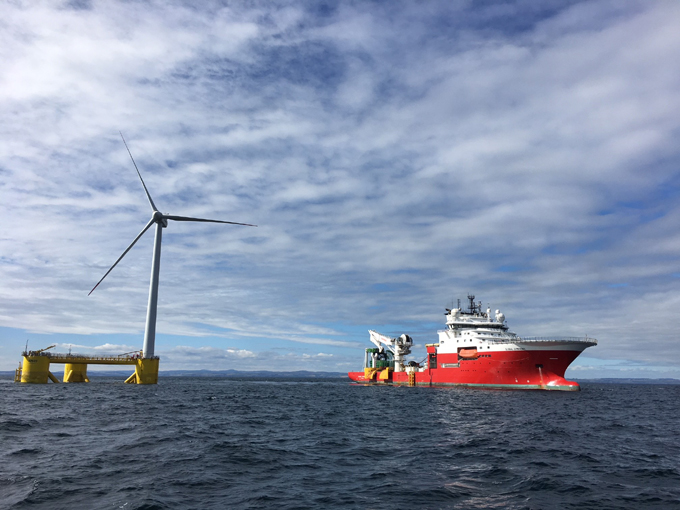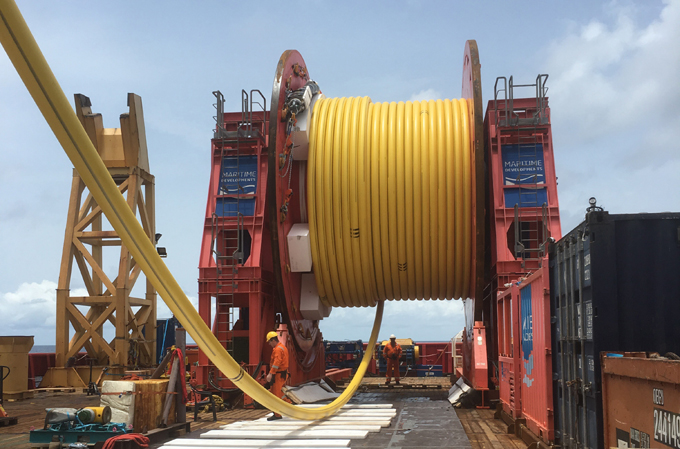Renewable energy in the UK has come a long way since the first North Sea wind turbine was installed 20 years ago. Today, there are more than 3,000 offshore turbines either already feeding into the National Grid or currently under construction1. This includes Dogger Bank located off the east Yorkshire coast which, once completed, will be the largest windfarm in the world.

Over the next five years, to meet the UK Government’s pledge that every home in the country will be powered by green energy from offshore wind, an investment of £60 billion from the private sector is expected to be pumped into developing, constructing and operating windfarms. As a result, the number of people working in the industry is set to rise from the current figure of 26,000 to almost 70,0002.
There is therefore a rapidly growing need for skilled companies and individuals, with a sound understanding of the renewables industry but particularly in offshore wind.
The UK’s subsea industry is world-renowned for its experience and expertise, largely honed in North Sea oil and gas but eminently transferable to offshore wind, as evidenced by the increase in subsea revenues from this market. But the industry is at a pivotal juncture where it must take important decisions and steps if it is to capitalise on the renewable opportunity.

Neil Gordon, chief executive of Subsea UK, said:
“We have seen a much sharper focus and acceleration from oil and gas towards renewables over the past year as companies adapt and reposition themselves to be part of the energy transition and net-zero targets.
“Reducing their reliance on volatile fossil fuel commodities is one driver but so too is the stream of exciting, live opportunities in offshore wind and those in emerging floating offshore wind, wave and tidal, hydrogen and CCUS.
“The companies already proving to be ahead of the curve are those who fully understand the synergies across the various renewable energy sectors as well as appreciating the differences.
“There’s a growing appetite for knowledge that will give companies a sound overview of the renewables sector, from licencing through to contracting models. Armed with this insight, companies will be able to position themselves in the renewables market.”
This demand was one of the drivers behind a new virtual offshore energy foundation course developed by NSRI, Subsea UK and the University of Strathclyde last year.
Across the two-days, sessions covered wind, wave, tidal, blue and green hydrogen as well as CCUS. Delivered by industry experts, the audience was privy to valuable insights on topics including the commercial and technical lifecycle of offshore renewable assets, design, manufacture, installation, power generation operations as well as decommissioning. Delegates included personnel from government organisations, insurance, investors as well as engineers from the oil and gas sector.
Tony Laing of Subsea UK played a key role in instigating this foundation course and helping to develop the content. He said:
“This joint initiative was led by some of the most experienced offshore engineering specialists in their fields and its relevance was underlined by the fact it was quickly over-subscribed. As a result of this demand, we’ve just confirmed a second course in June.”
As well as looking to impart knowledge that informs business development opportunities within the adjacent markets, there is also a growing need for an aligned approach to training the workforce across the entire underwater industry.
“Identifying commercial targets and investing in new capabilities to win business is only part of our journey into renewables. A new skills strategy and training pathway is required to support the industry further and ensure a sustainable pipeline of future workers,” explained Neil.
“The subsea talent pool has been unavoidably reduced because of the impact of the pandemic, taking with it a lot of knowledge and expertise before it could be passed on to the next generation.
“There has also been a decrease in the number of new graduates and apprentices coming on board with a whole wave of young people having to reconsider their preferred career paths last summer.
“Identifying where the skills gaps are is an important factor in securing our industry’s future. While our skills are transferable, particularly from oil and gas to offshore renewables roles, it’s not always a like-for-like situation. Those who do decide to rejoin our industry as we embark on the green recovery will have to reskill or upskill. We need to thread the needle now between the underwater sector’s existing skillset and the gaps to ensure we are well placed for a more fluid and successful transition.”
For more information about the Offshore Energy: from Oil and Gas to Renewables course click here.
Energy Industry Directory: Subsea UK
 KEYFACT Energy
KEYFACT Energy